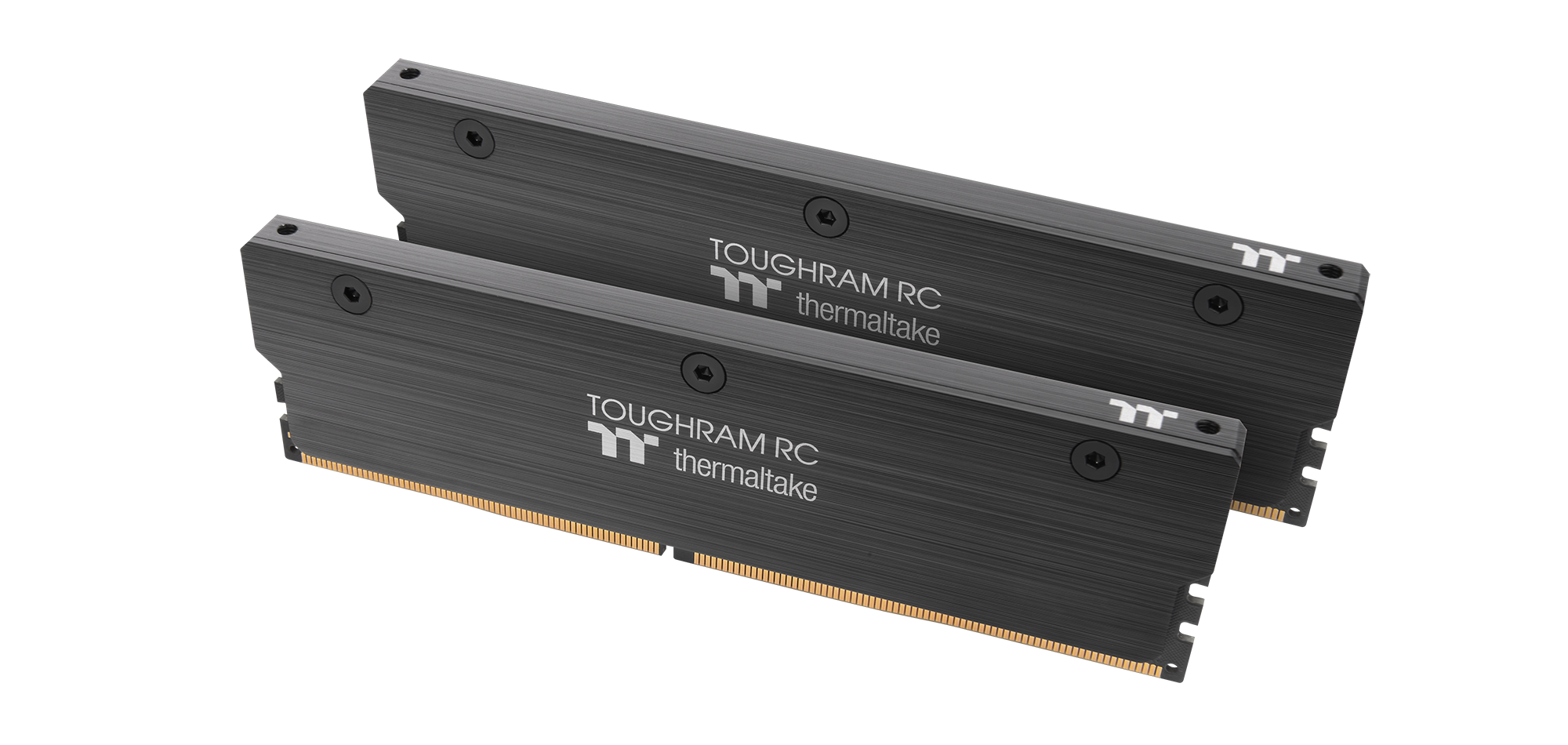Thermaltake's Latest AIO Cools Your Memory
If there was ever something we didn't need, this is it.
To date, not once has any AIO maker thought to cool your system's memory. This was true right up until we saw Thermaltake's new Floe RC units at CES. Of course, it's no secret sauce that you really don't need to cool your memory, overclocked or not, but there's something cool (pun not intended) about doing it anyway. Today, Thermaltake is unleashing its Floe RC-Series coolers so you can get in on the RAM-cooling action.
Aside from the memory module, the AIO's doesn't differ from normal all-in-one liquid coolers, packing a CPU block with a pump inside, a radiator with RGB fans, and sleeved tubing. Naturally it's all compatible with the most common addressable-RGB ecosystems from the major motherboard manufacturers.

However, it's not all smooth sailing in unnecessary RGB and tubing goodness. To use the kit, you'll have to pair it with Thermaltake's upcoming not-yet-released ToughRAM RC memory, as the memory cooling block will only bolt onto those -- this cooler is not compatible with any other memory, unless you just let the memory block sit there, loose.
If it were up to us, therefore, we would simply stick to a regular AIO and RGB-enabled RAM, as all this kit really adds on top of that is one extra tubing run that looks cool -- the lighting on the memory block can be easily duplicated some other way.
Nevertheless, pricing isn't crazy. The 240mm unit will be yours for $140, with the 360mm variant exchanging owners for $170. Thus, it will depend on pricing of the accompanying memory kits to judge whether this is worth it. But alas, no pricing is available for the memory units yet as RAM prices are fluctuating quite wildly at the moment.
Get Tom's Hardware's best news and in-depth reviews, straight to your inbox.
Niels Broekhuijsen is a Contributing Writer for Tom's Hardware US. He reviews cases, water cooling and pc builds.
-
etudiant Seems a horizontally mounted cooler such as the Noctua NH-C14S would be more generally applicable.Reply
Also, the VRM is by far more at risk in most setups than the memory, yet this design leaves it to bake, while a horizontal fan at least provides some cooling there. -
bit_user Reply
The main thing I like about down-draft coolers is VRM + memory cooling.etudiant said:a horizontal fan at least provides some cooling there. -
bit_user Replyyou really don't need to cool your memory, overclocked or not
This is a testable claim. It'd be interesting to test not only maximum overclock, but also the frequency of memory errors when overclocking.
I find it a little hard to believe that memory cooling wouldn't at least improve stability of systems with overclocked memory.
